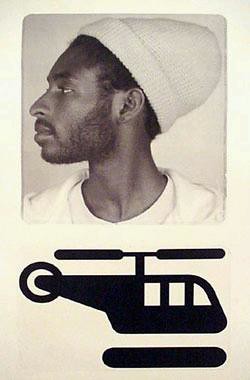This calls for wisdom: let him who has understanding reckon the number of the beast, for it is a human number, its number is six hundred and sixty-six.
-The Revelation of St. John, 13:18
Today's date is 6/6/06 according to the Gregorian calendar which, based on the above Bible verse, has a certain sinister theological significance for some folks. I will accordingly, share six different comments that sort of fit under the general umbrella.
1. The remake of The Omen (a film about the anti-Christ as a child) is opening in theaters today. The filmakers are definitely trying to capitalize on the whole 6/6/06 co-incidence. I was surprised that they even attempted a remake. Along with The Exorcist and Rosemary's Baby, the original Omen is one of the scariest movies I've ever seen. It is definitely a horror classic, as is and in my opinion, it holds up pretty well over the years. On the other hand, I wouldn't say the same thing about the other two films in the trilogy which were really dated. I definitely think that The Omen II and the Final Conflict would be improved with a more contemporary feel.
2. One of the things that appeals to me about how the Quran treats certain subjects is that it just sticks to the essentials. This is especially true about eschatology ("last things"). We are told that there will be a Last Day and that our deeds will be weighed in the end. And these events are described in vivid cataclysmic terms which move and inspire individuals to refelction and action. But the Quran doesn't give the kind of details which would encourage useless speculation on the subject. (like the Left Behind series, or the Omen movies, etc.)
At the same time, I should be the clear that the above comments are specific to the Quran. If we go to the hadith, we can find a basis for a pretty rich and detailed Islamic eschatology which includes the Dajjal (the false Christ) the Second Coming of Jesus, the Mahdi, Gog and Magog, and even Islamic versions of the Beast and the Rapture doctrines as well. I would just argue that they are less central, at least in Sunni Islam.
3. The Revelation of St. John is at times a hard text to decipher. And Christians haven't really been able to agree among themselves on how to interpret it. The terms Amillenialism, Premillenialism and Postmillenialism are often used to describe different Christian understandings of the end-time. One of the more interesting interpretations is known as
Preterism which holds that many or all of the Biblical prophecies about the endtimes were essentially fulfilled in the First century. Under this interpretation, the Revelation of St. John is more like a coded political tract than the surrealist nightmare of the literalist. For the Preterist, the book is about the end of the Mosaic dispensation, the destruction of the temple, the fall of Jerusalem and the persecution of the early Christians by the Romans. In fact, according to some calculations, Nero's name can be seen to correspond to the number 666.
4. In both Hebrew and Arabic, there are conventions which allow letters to be given numerical values. And so in Jewish and Muslim cultures, there is a tradition of taking texts and "doing arithmetic" on them to see another level of meaning. In the case of Hebrew this is called
gematria. In Arabic it is called
abjad. Those who utilize gematria might argue that if two words from the Torah have the same numerical value it could indicate connections between the related concepts. And a common use of abjad (the most common I've seen, anyway) would be the use of "786" as an abreviation for "Bismillah Ar-Rahman, Ar-Rahim" (In the name of God, the most Merciful, the most Compassionate) in order to avoid writing the name of God. (Not unlike how orthodox Jews use "G_d" in writing).
Also, somewhat controversially,
Rashad Khalifa claimed that he had used a similar method to uncover a mathematical miracle in the Quran which establishes its divine origin. He is a controversial figure, mainly for three reasons: 1) he took a "sola scriptura" approach and ended up emphasizing the Quran to the exclusion of the hadith. 2) He believed in his own method so much that when it turned out some sections of the Quran didn't fit his theories, he rejected those verses instead of rejecting his theories. And 3) In the end, he himself claimed to be a rasul, a messenger of Allah after Muhammad (saaws).
I think it is possible to find a number of interesting mathematical facts one can mention about the Quran, and if that helps sustain and strengthen someone's faith then masha Allah. But in general, moderation and caution are also important, especially if the mathematical methods lead to questionable conclusions.
5. Early followers of the Bab (A Persian religious figure who claimed to be the Mahdi, and who is considered a forerunner by the Bahai Faith) were also into abjad. If you are interested in Babi/Bahai issues, apparently there are
some Babi abjad-related prophecies which the Bahai faith failed to satisfy. At least, that's the argument some Babis make.
6. And finally, I'm still reading Foucault's Pendelum. I just finished a passage where the narrator is trying to guess the password on his friend's computer (and the friend happens to be a religious fanatic of sorts) and so one of the possibilities he tries is 666. The book is interesting but a little slow-going. Umberto Eco is a dense writer and he makes me want to check Wikipedia every other page in order to make sure I "get" all the terms and references.
UK Submitters:
Mathematical Miracle of the KoranThe Straight Dope:
What's up with 666, the "mark of the beast"?